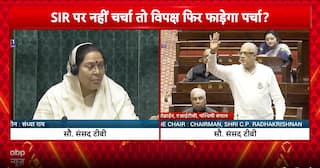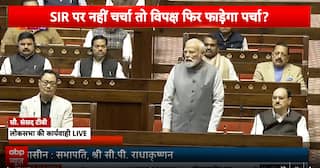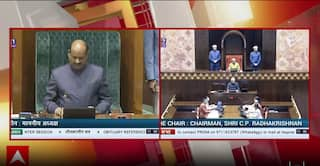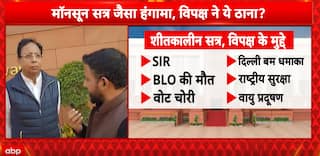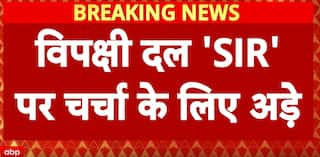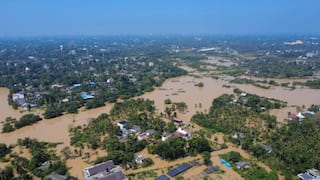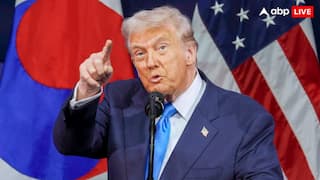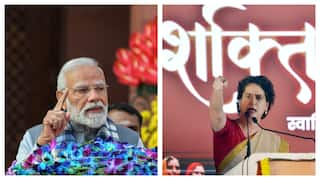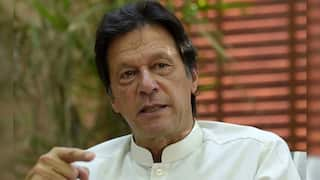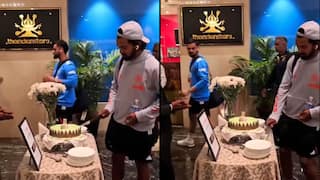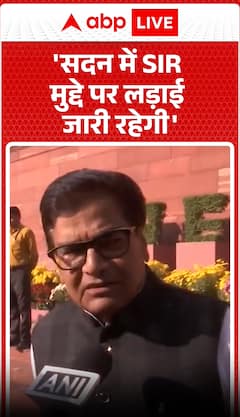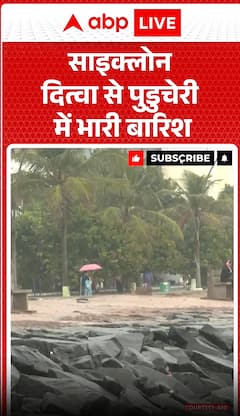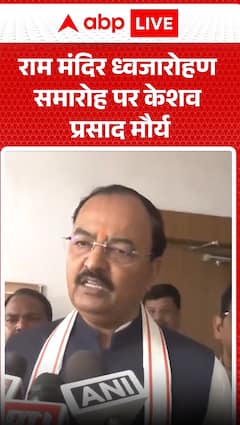Does Netflix Series 'IC 814' Hide Muslim Identities Of Hijackers? Know What MEA Said About Them In 2000
Netflix web series 'IC 814: The Kandahar Hijack' has been accused of hiding Muslim identities of the terrorists. It was, however, documented in the past that the hijackers had assumed false names.

'IC 814' Controversy: Devi Sharan, pilot of the ill-fated Indian Airlines flight IC 814 that was hijacked by terrorists in 1999, penned his harrowing experience in a book a few months later. Filmmaker Anubhav Sinha dramatised the book, 'Flight into Fear: The Captain's Story', which Devi Sharan co-authored with journalist Srinjoy Chowdhury, for the new Netflix web series, 'IC 814: The Kandahar Hijack'.
The Kargil war had taken place earlier that year, and India was looking to move on and enter the new millennium when the December 24, 1999, terror act shocked the country. The plane, carrying 176 passengers and 15 crew members, was hijacked after it took off from Kathmandu for New Delhi. What was supposed to be a couple of hours' journey turned into a 173-hour nightmare.
A quarter century on, Netflix series 'IC 814: The Kandahar Hijack', based on the incident, has brought the memories back.
While the star-studded six-episode show drew rave reviews for a convincing portrayal of the incident, a section of people on social media have taken exception to the names by which the five hijackers are addressed in the series.
In fact, according to reports, the Union Ministry of Information and Broadcasting has asked the Netflix content head to appear before it on Tuesday, September 2, over these allegations.
Director Anubhav Sinha has been accused of hiding the Muslim identities of the terrorists who executed the hijack plan, killing one person (Rupin Katyal) in the process, and succeeded in getting dreaded terrorist Maulana Masood Azhar and two others released in exchange for the passengers taken hostage.
Masood Azhar went on to launch terror outfit Jaish-e-Mohammed in early 2000.
ALSO READ ON ABP LIVE | Who is Devi Sharan? Indian Airlines Pilot Played By Vijay Varma In Netflix Series 'IC 814'
Who Were The Five Hijackers Of IC 814?
On January 6, 2000, ten days after the IC-814 hijack, the Ministry of External Affairs (MEA) released a statement claiming a “significant breakthrough”.
It said the Mumbai Police, working with central intelligence agencies, had arrested four ISI men who were in Mumbai operating as the “support cell for the five hijackers of the Indian Airlines plane”.
The MEA said these men had identified the five hijackers, and confirmed that all were Pakistanis.
The five were identified as Ibrahim Athar (Bahawalpur), Shahid Akhtar Sayed, Gulshan Iqbal (Karachi), Sunny Ahmed Qazi (Defence Area, Karachi), Mistri Zahoor Ibrahim (Akhtar Colony, Karachi), and Shakir (Sukkur city).
The MEA specifically mentioned in the statement that, on the plane, these five hijackers were being addressed by each other by their aliases.
“To the passengers of the hijacked place (sic) these hijackers came to be known respectively as (1) Chief, (2) Doctor, (3) Burger, (4) Bhola and (5) Shankar, the names by which the hijackers invariably addressed one another,” the statement read.
The web series, in a particular scene, showed the negotiator from the Indian government’s side address the person named ‘Chief’ by his “real name” Ibrahim.
Senior journalist Neelesh Misra, who has also written a book on the IC-814 hijacking ('173 Hours in Captivity: The Hijacking of IC814'), agreed that the five hijackers had assumed the same false names as shown in the series.
“‘Shankar’ “Bhola’ ‘Burger’ ‘Doctor’ and the ‘Chief’, the brother of then-jailed Masood Azhar himself. All the hijackers assumed false names. That is how they referred to each other and how the passengers referred to them throughout the hijacking,” he posted on X.
“Shankar”
— Neelesh Misra (@neeleshmisra) August 31, 2024
“Bhola”
“Burger”
“Doctor”
and the “Chief”, the brother of then-jailed Masood Azhar himself.
All the hijackers assumed false names. That is how they referred to each other and how the passengers referred to them throughout the hijacking.
— Regards, the author of the… https://t.co/fZgUZiXxPm
In a subsequent post, while replying to a query, Misra also said that the terrorists did indeed play ‘antakshari’ with the hostages, as shown in the series.
“Yes. It’s in my book. Based on countless interviews with passengers.”
Yes. It’s in my book. Based on countless interviews with passengers.
— Neelesh Misra (@neeleshmisra) August 31, 2024
An apple from which Burger took a bite was passed around the hungry passengers.
Ripan Katyal brought to the business class and slashed to death, lying dead for days while his newly wedded bride sat in the… https://t.co/qSKUA6EPH5
As shown in the web series, Misra’s book, too, mentioned how Rupin Katyal was killed after being brought to the business class. His newly wedded wife, seated in the economy class, remained unaware of his death until after the saga ended and the hostages were released.
ALSO READ ON ABP LIVE | 'IC 814: The Kandahar Hijack' Review: Vijay Varma Starrer Is A Gripping Retelling Of The 1999 Terror Act
What Did MEA Say About IC 814 Hijack Probe In 2000?
The “significant breakthrough” that the MEA mentioned in its statement came when they intercepted a call made to one Abdul Latif in Mumbai from Pakistan by an associate of the hijackers on December 29, 1999. Latif was one of the four ISI operatives arrested from Mumbai on the bases of this clue.
Giving details of what the investigators learnt from the interrogation of the accused, the MEA said the hijack plan was executed after nearly two months’ preparations. The hijackers and their Mumbai associates, including Latif, went to Kathmandu several times for the purpose.
The MEA listed six “tell-tale pointers” to claim Pakistan’s complicity in the terror act:
- Spotting of a Pakistan Embassy car (42 CD 14) that arrived at the Kathmandu airport a little before IC 814 took off. Three officials had alighted from the car and gone to the Departure Lounge, and it was believed that it was one of these men who had supplied a consignment of RDX to a group of militants in Kathmandu a few years back.
- After taking control of the plane, the hijackers’ first directive to the pilot was to “proceed to Lahore”.
- ATC Lahore had denied permission to the hijacked plane to land when the Indian pilot made a request, but it agreed later when the ‘Chief Hijacker’ told them that the plane had to be refuelled.
- The hijackers had initially, after the negotiations started, demanded 36 prisoners to be released from Indian jails. As many as 33 of them were Pakistanis, while one was a UK national of Pakistani origin, one was an Afghan, and one a Kashmiri Indian. “Pak interest in getting these prisoners released is evident,” the MEA had said.
- Commenting about Maulana Masood Azhar, the MEA said he had entered India in 1994 under a pseudonym Essa Bin Adam, and on a Portuguese passport. It said he had the “obvious objective of promoting militancy in J&K”, and was owned by the Government of Pakistan “as early as June 1996, when Major General (Retd.) Nasirullah Khan Babar, the then Interior Minister of the Government of Pakistan, wrote to the then High Commissioner of India in Islamabad seeking his release on ‘humanitarian grounds’.”
- In December 1997, the MEA said, the Pakistan High Commission in New Delhi had sent a request to the MEA seeking consular access for Masood Azhar, claiming he was a Pakistani national.
The MEA also noted in the January 2000 statement that it had got intel on some of the persons released after the hostage crisis “surfacing in Pakistan”.











